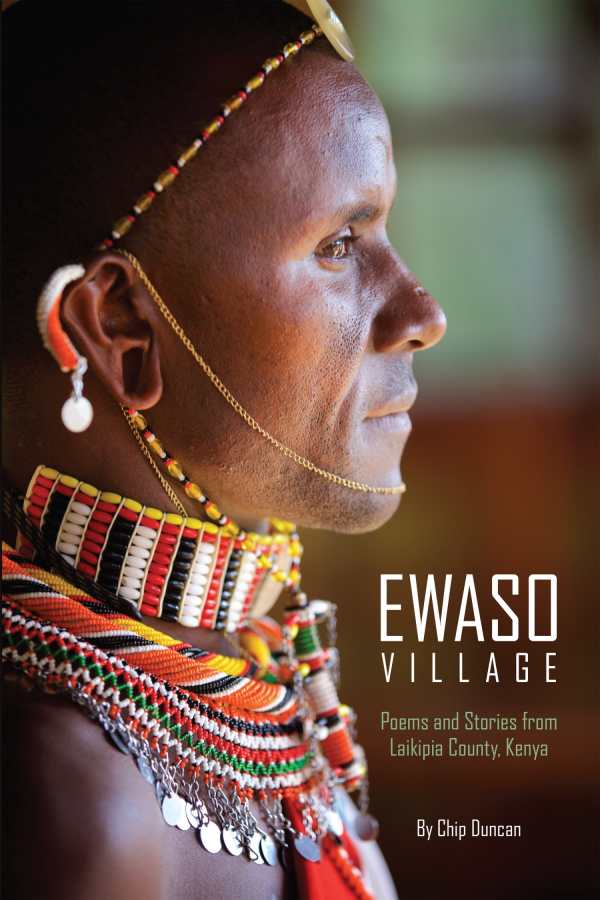Ewaso Village
Poems and Stories from Laikipia County, Kenya
Ewaso Village is a sensitive photojournalist’s account of time spent with the Maasai people of Kenya.
Photojournalist and documentary filmmaker Chip Duncan’s Ewaso Village focuses on the Kenyan Maasai community, capturing them through photographs, history, stories, and poems.
Duncan first visited Ewaso Village in 2012 and was welcomed into its society. Since then, he has returned annually, drawn by the community’s kindness, generosity of spirit, and easy acceptance of him. Ewaso Village conveys his deep care and respect for the community and their culture. Recording both events and conversations, the book captures moments in the lives, families, traditions, and rituals of the Maasai people.
The text also argues that preserving the ways of life of the Maasai people has become more urgent. They live off of the land and maintain ancestral values, traditions, and language, making them integral to the fabric of life in Kenya. But though the Maasai have survived hardships and danger before, relying on their strong senses of community and inclusivity, they now face new challenges, Duncan says. In particular, the text emphasizes Maasai problems that arise from climate change and conservation efforts, as the nomadic group moves around the land in search of fresh resources. They contend with conservationists in these efforts, on whose behalf the Kenyan government appropriates land, curtailing the Maasai people’s movements.
Further, interspersed between the book’s stories of particular Maasai people and its cultural, historical, and social commentary come Duncan’s poems; these were inspired by his stay in the Ewaso village. They include some words in Maa (the language of the Masaai) for added authenticity, though the meanings of these words are made most clear in the poems’ footnotes. Still, the poetic lines are raw and evocative, working to manifest a sense of the land and the Maasai way of life. One follows a lion’s hunt for water, lamenting that a river has become a road; the animal’s search echoes the Maasai people’s struggles to find water as glaciers deplete and rainfall is unpredictable.
The included photographs are breathtaking. The nuanced expressions on the Maasai people’s faces evoke the gamut of human emotions. The images are also used to explore centuries’-long traditions around song, dance, and family resilience. Complex, colorful traditional ornamentation is shown in detail, while daily hardships are pictured alongside everyday joys.
Ewaso Village is a sensitive photojournalist’s account of time spent with the Maasai people of Kenya.
Reviewed by
Keira Soleore
Disclosure: This article is not an endorsement, but a review. The publisher of this book provided free copies of the book and paid a small fee to have their book reviewed by a professional reviewer. Foreword Reviews and Clarion Reviews make no guarantee that the publisher will receive a positive review. Foreword Magazine, Inc. is disclosing this in accordance with the Federal Trade Commission’s 16 CFR, Part 255.

